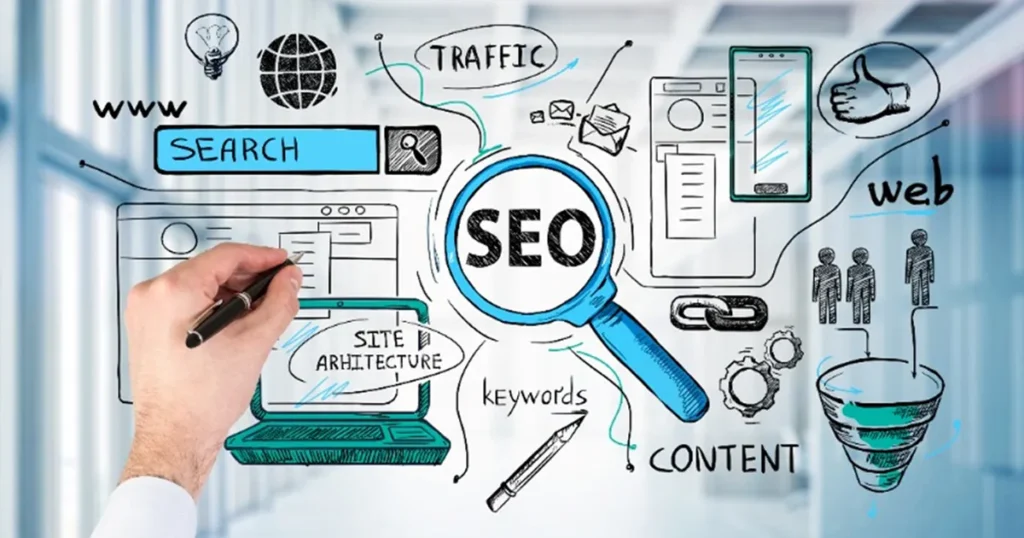International SEO Tips for Multilingual Stores on Shopify
Given Shopify’s ever-growing worldwide presence, your online shop may draw consumers from all across the world. Therefore, Shopify multilingual SEO is crucial for stores. Optimizing your site for many languages can greatly increase your exposure and revenues because Shopify is a leading platform for e-commerce and online shopping is expanding quickly all around. Given that the cross-border market is predicted to reach €881 billion in 2020 and more individuals are shopping from foreign retailers, this is particularly vital.

Although global e-commerce sales are expected to reach a startling $6.4 trillion by 2029, this creates a specific set of difficulties particularly with regard to SEO.
How To Do Shopify Multilinigual SEO in Easy Steps
Unlike conventional SEO, which focuses on maximizing your website for a particular language and location, international SEO calls for a more sensible strategy.
Even a company as large as Coca-Cola needs to modify its message to appeal to all cultures and languages, you have to take into account linguistic variations, cultural quirks, and the differing search patterns across various regions.

Fortunately, Shopify’s built-in multi-language tools let companies grow globally more easily. These technologies and multilingual search engine optimization can help you drive your global e-commerce development.
1. Specify Target Countries
Though exploring unknown territory may be appealing, do your homework and be diplomatic! Determine where your brand has most chance for success and create a plan depending on the local target demographic and culture.
Analyzing your present website performance can help you to start with facts. For instance, Google Analytics offers insightful analysis on the geographic location of your audience. Go to Audience > Geo > Location to find out from where your guests are arriving. This points out where you are already creating natural curiosity.
The Search Performance Report on Google Search Console for your website is another gold mine of data for international search optimization. From each of your top nations, it displays the top 1,000 search terms that brought consumers to your website. Review these phrases to evaluate the quality of your natural traffic. This will also indicate to you what appeals to your local audience.
Recall, Not Just About Traffic
Though in practice they shouldn’t be the basis for your whole development strategy, website traffic and search statistics are important indications. Effective global Shopify multilingual SEO calls for meticulous planning and execution considering elements like logistical difficulties, local laws, language hurdles, and more.
2. Establish specific URLs for every region.
Because it tells which area your material is meant for search engines and guides consumers toward what to anticipate when they click, a well-structured URL forms the foundation of international SEO.
You may follow a few many ways:
Top-Level Domains in Structure 1: Country Code
Short letter codes—such as “.ca,” for Canada, “.co.uk,” for the United Kingdom, and “.de,” for Germany—allow one to quickly identify these kinds of URLs.
www.example.de, for instance.
Using a ccTLD tells search engines your website is especially designed for a certain nation, therefore boosting your multilingual SEO. Having a different version of your website on every ccTLD, however, may be challenging as it entails running many domains.
Although Shopify unifies all of your worldwide domains in one handy dashboard, thereby simplifying this procedure; yet, managing many sites still calls for more resources.
Second structure: subdomains
For your international Shopify multilingual SEO, subdomains are a perfect substitute for country-code top-level domains (ccTLDs) because you just put the country code at the beginning of the root domain name instead of purchasing and running many distinct domains.
For example: uk.example.com
It’s usually simpler to handle than establishing subfolders for every nation; you don’t have to purchase and oversee many new domain names.
Structure 3: Directories underneath each other
Another somewhat common choice for organizing a international Shopify multilingual SEO website is subdirectories. You build a subfolder for every nation or language within your primary domain instead of utilizing several domains or subdomains.
You will see something like this, much like on the Microsoft website page above: http://www.example.com/en-us/
Using the ISO 639-1 language code followed by the Alpha-2 country code—for Germany, /de-de; for the United States, /en-us—is a great practice for international SEO.
This approach signals to search engines and users which language and location the content is customized to, therefore maintaining everything consolidated under one domain and greatly simplifying management of your multilingual SEO initiatives.
Make sure you follow whatever URL format you choose for all of your areas. Avoid mixing and matching—that is, using a subdomain for one nation and another for another.
3. Use tags from Hreflang.
need you decide to follow the subdirectory URL path, you need then ensure that hreflang tags are used appropriately.
International SEO depends on these tags as they help search engines route consumers to the most relevant version by clarifying the link between web pages in different languages or region-specific content. In essence, they let search engines know which language your material is written in so that they could show the correct version of your website in search results for that area.
HTML elements, HTTP headers, or simply stating them in the sitemap of your website will all help you to install hreflang tags. HTML tags are the easiest approach to use Shopify—a hosted solution with automatically created sitemaps—without an app.
Here again, keep in mind to add Alpha-2 country codes and ISO language codes for best worldwide SEO results. For English used in the United Kingdom, for instance, use “en-gb” rather than just “en,” or “en-uk. Sounds convoluted? Using a hreflang tags generator helps one to produce proper tags and prevent such typical errors.
4. Develop Localized Content
It’s time to concentrate on creating material that appeals to your target markets after you have perfected the technical elements of your international Shopify multilingual SEO shop and are sure search engines can classify the many foreign versions of your website.
This is one of the most crucial elements of worldwide SEO as search engines like original, diverse material for every area since it shows the purpose and relevancy of your many websites.
Using suitable language and phrasing also improves international Shopify multilingual SEO as it helps your material to match local search behavior.
From your visitors’ point of view, it enhances the user experience as it might be startling for readers to encounter foreign words or idioms. For instance, we say “chips,” in the United States, whereas in the United Kingdom “crisp.” Using the suitable language can help your material seem more natural to the local readers.
Fortunately, you may translate your material while considering dialect and local terminology by using solutions like Weglot and Langify, which fit Shopify websites very well.
Remember, localization for foreign SEO extends beyond words; take cultural differences in your imagery, message, and even color schemes to ensure your material speaks to any particular market.
5. Create Regional Linkages
SEO depends on backlinks, hence this is also true for the growth of international e-commerce.
Emphasize developing ties with industry magazines, blogs, and local influencers. Additionally helping you create useful backlinks—which will increase the visibility of your site in those markets—are guest blogging, content collaboration, and participation in online community forums.
Apart from the global SEO advantages, working with reliable influencers is a great approach to enter fresh markets. Actually, a poll found that 84.8% of participants consider influencer marketing to be a successful tactic. Most brands that test it are glad with the outcomes and ready to keep using the technique.
6. Make use of automated translating tool.
Automatic translating tools help you to translate online shop material into many languages. This allows you increase the scope of your market without much spending on hand translating. Products descriptions, information pages, and blog entries may all be rapidly translated by these providers. To guarantee correctness and cultural appropriateness, the translating findings might have to be checked, nevertheless.
One solution that connects with Shopify and other e-commerce systems is Linguise. This service provides front-end live editing, high-accuracy AI-based automated translation, JavaScript dynamic content translating, extra capabilities like SEO translation and automatic language identification. Linguise uses these tools to let Shopify business owners maximize their multilingual approach.
7. Excellent translating of any language.
An efficient multilingual SEO plan revolves mostly on high-quality translating. It’s about expressing cultural subtleties and local context as much as language precision.
Translation of your material should be done by native speakers or expert translators. Machine translation loses idioms, slang, and cultural allusions that they can catch. If you are translating Shopify using an app, however, you should make sure the output is accurate and of good quality—such as the accuracy results table for several languages offered by Linguise below.
All set to launch your Shopify Store worldwide?
Although growing your company abroad is an interesting endeavor, SEO calls for a calculated strategy.
The knowledgeable staff of HA-Technologies will assist you in negotiating the complexity of multilingual Shopify SEO. We can develop a customized plan to increase the worldwide presence of your business and have great expertise maximizing Shopify shops for international e-commerce growth.
Get in touch right now to get a free international SEO strategy analysis and begin global Shopify company growth!
